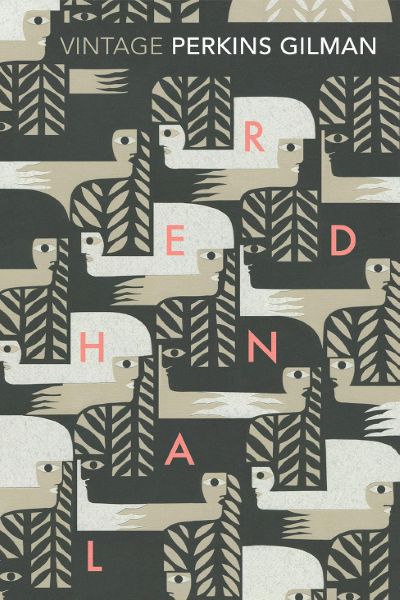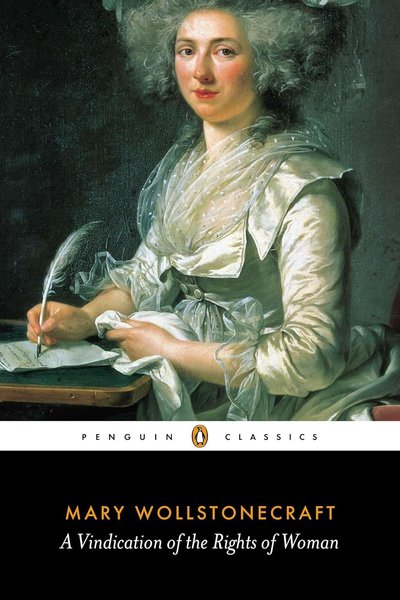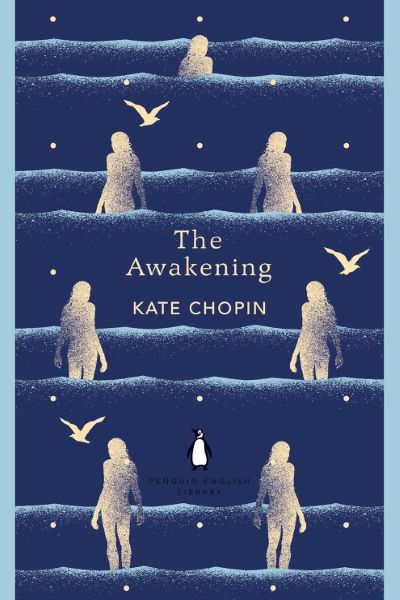Herland
A groundbreaking feminist utopian novel published in 1915 that envisions an ideal society composed entirely of women, exploring fundamental questions about gender roles, social organization, and women's potential.

📝 Book Review
Against the backdrop of the surging feminist movement of the early 20th century, Charlotte Perkins Gilman’s “Herland” exploded like an intellectual bomb, completely overturning traditional gender concepts and social organizational models through its bold imagination and profound social critique. This utopian novel, first serialized in “The Forerunner” magazine in 1915, though not officially published as a book until 1979, had already established an unshakeable classic status in the history of feminist literature.
As one of the most important feminist theorists of the late 19th and early 20th centuries, Gilman’s identity itself embodied the complex circumstances of women intellectuals of that era. As a socialist lecturer, feminist theorist, and writer, she personally experienced various restrictions and challenges women faced in patriarchal society. Her most famous short story “The Yellow Wallpaper” had already won her reputation but also brought controversy. It was against this background that she turned to utopian novel creation, attempting to construct an ideal social model for women through imagination.
Revolutionary Social Structure
The story setting of “Herland” itself constitutes a fundamental challenge to traditional social structures. The novel describes a mysterious country accidentally discovered by three American male explorers, a land composed entirely of women who reproduce through parthenogenesis (asexual reproduction), creating an ideal social order without war, conflict, and domination. This setting is not only a direct challenge to male-centrism but a complete overthrow of the traditional notion that “men are necessary factors for social progress.”
In this female utopia, Gilman carefully constructed a complete social system. The women of Herland developed highly advanced agriculture, education, and governance systems, with their society centered on core values of cooperation, care, and sustainable development. Without the concept of private property, without competition and exploitation, everyone could realize their potential and contribute to the welfare of the entire society. This social model directly corresponded to Gilman’s critique of real social problems and her socialist ideals.
The most thought-provoking aspect is the redefinition of motherhood in the novel. In Herland, motherhood is no longer a passive biological function or constraint of social roles, but an active social constructive force. The women extend their care for the next generation into responsibility for the entire society, forming a concept of “social motherhood.” This motherhood is not based on biological determinism but on choice and dedication. Through this redefinition, Gilman challenges traditional notions that confine women to the domestic sphere.
Revolutionary Educational Philosophy
“Herland’s” portrayal of education is equally revolutionary. In this female society, education is both a right and obligation for everyone, and knowledge transmission occurs not through authoritarian indoctrination but through inspiration and guidance. Children grow up in free environments where their talents are fully discovered and cultivated. This educational philosophy directly reflects Gilman’s critique of contemporary educational systems, particularly her dissatisfaction with limited educational opportunities for women.
The educational system in Herland emphasizes individual development while maintaining social cohesion. Children are encouraged to explore their interests and abilities without gender-based limitations. The absence of competitive pressure allows for genuine learning and personal growth, creating citizens who are both individually fulfilled and socially responsible.
Literary Technique and Narrative Strategy
From a literary technique perspective, “Herland” employs first-person narration through the perspective of three male characters to present this female utopia. This narrative strategy cleverly utilizes male readers’ cognitive frameworks, enabling them to more easily enter this strange world while also demonstrating the superiority of female society through the transformation of male characters. The three male characters represent different types of masculinity: Terry represents traditional chauvinism, Jeff represents idealized female worship, and the narrator Vandyke represents relatively enlightened but still biased intellectuals.
Through the interactions between these three male characters and the women of Herland, Gilman systematically deconstructs various myths about female “nature.” The women of Herland are neither traditional “angels” nor “demons” from male fantasies, but complete human beings. They possess wisdom, courage, creativity, and the ability to think and act independently. Their “feminine qualities” such as care, cooperation, and intuition are presented as positive social constructive forces rather than weaknesses or limitations.
Economic Innovation and Social Organization
“Herland’s” imagination of economic systems is equally forward-looking. In this society, labor serves the interests of the collective rather than individual accumulation. Everyone contributes to society according to their abilities and interests while enjoying the fruits of social development. This economic model eliminates poverty and inequality, creating a true welfare society. This vision highly aligns with Gilman’s socialist beliefs and anticipates later welfare state concepts.
The economic system in Herland operates on principles of mutual aid and resource sharing. Work is seen as contribution to the common good rather than mere survival necessity. This approach eliminates the exploitation inherent in capitalist systems while ensuring that everyone’s needs are met and talents are utilized effectively.
Ecological Consciousness and Environmental Harmony
From an ecological perspective, “Herland” demonstrates remarkable foresight. The women of Herland live in harmony with nature, their agricultural practices focus on sustainable development, and urban planning considers environmental protection. This ecological consciousness was quite advanced in the early 20th century, presaging the development of later ecofeminist theory. Through this setting, Gilman suggests that women’s caring qualities might be better suited for handling human-nature relationships.
The novel’s environmental vision includes careful forest management, sustainable agriculture, and cities designed to integrate with natural landscapes. This holistic approach to environmental stewardship reflects Gilman’s understanding that social and ecological health are interconnected, anticipating contemporary environmental movements.
Challenges and Limitations
However, “Herland” is not a flawless utopian imagination. From today’s perspective, certain settings in the novel reflect the limitations of that era. For example, the homogeneity of Herland society might overlook the value of diversity, and the setting of parthenogenesis might also reinforce biological determinist viewpoints. Additionally, the novel’s treatment of race and class issues appears relatively simplistic.
The novel’s focus on white, middle-class women’s experiences limits its inclusivity, and its biological explanations for social organization can be problematic. Modern readers must engage critically with these aspects while appreciating the novel’s groundbreaking contributions to feminist thought.
Historical Significance and Theoretical Value
Despite these limitations, “Herland” as a pioneering work of feminist literature retains inestimable historical significance and theoretical value. It not only provides women with a space to imagine freedom but also offers concrete blueprints for social reform. Many concepts proposed in the novel, such as gender equality, social cooperation, and sustainable development, still hold important practical significance today.
The novel’s influence extends beyond literature to social theory, urban planning, and environmental thought. Its vision of a society organized around care rather than competition continues to inspire alternative social models and critiques of capitalist structures.
Influence on Later Feminist Literature
“Herland” has had profound influence on later feminist literature. From Ursula K. Le Guin’s “The Left Hand of Darkness” to Margaret Atwood’s “The Handmaid’s Tale,” from the Amazon Island in “Wonder Woman” to recent works like “The Power,” traces of “Herland” can be seen. These works either inherit or subvert Gilman’s utopian imagination but inevitably form dialogues with this pioneering work.
The tradition of feminist speculative fiction owes much to Gilman’s groundbreaking work, which demonstrated that women could create complex, alternative social visions and use literature as a tool for social change. This legacy continues in contemporary works that imagine different gender relations and social structures.
Contributions to Science Fiction and Utopian Literature
At the literary technique level, “Herland” also made important contributions to the development of science fiction and utopian literature. It proved that female writers could equally construct grand worldviews and social systems, breaking the prejudice that science fiction literature was a “male monopoly.” Simultaneously, it demonstrated how to combine social critique with imagination, creating literary works that are both entertaining and enlightening.
The novel’s careful world-building and attention to social detail established standards for utopian fiction that continue to influence writers today. Its integration of feminist theory with narrative fiction created a new model for socially engaged literature.
Contemporary Relevance and Ongoing Significance
Looking back at “Herland” from a contemporary perspective, we can see it is both a product of the feminist movement of that era and a prophecy about future social development. In today’s context where gender issues receive increasing attention, rereading this classic work, we find that many problems Gilman raised remain unresolved, and her utopian imagination still holds strong practical significance.
Contemporary discussions about work-life balance, sustainable development, alternative economic models, and gender equality all find precedents in Gilman’s vision. The novel’s emphasis on cooperation over competition and care over domination remains relevant to current social and political debates.
Literary Legacy and Social Reform
“Herland” reminds us that literature is not only a reflection of reality but also a tool for transforming reality. By imagining a different world, we can reexamine existing institutions and concepts, discovering possibilities for change. In this sense, “Herland” is not only a literary work but a manifesto for social reform, continuing to inspire new generations of feminists and social reformers to strive for building a more just and equal society.
The novel’s enduring power lies in its demonstration that alternative social arrangements are possible and that literature can serve as a laboratory for testing new ideas about human organization. By presenting a functioning society based on feminist principles, Gilman proved that women’s values and approaches could create viable alternatives to patriarchal structures.
Conclusion: Vision and Transformation
Today, “Herland” stands as both a historical document of early feminist thought and a continuing source of inspiration for social transformation. Its vision of a society organized around care, cooperation, and sustainability offers insights into addressing contemporary challenges from climate change to social inequality. The novel’s greatest achievement lies in expanding the imagination of what human society could become, proving that the first step toward transformation is the ability to envision alternatives to current arrangements.
Through its combination of social critique, utopian vision, and engaging narrative, “Herland” continues to serve as both entertainment and education, inspiring readers to question existing assumptions and work toward creating more just and sustainable communities. In an era still grappling with many of the same issues Gilman addressed over a century ago, her imaginative solution remains both challenging and hopeful, reminding us that different worlds are possible if we have the courage to imagine and create them.
Discussion
读书讨论
分享您对这本书的感想和看法,与其他读者交流见解
加入讨论
分享您对这本书的感想和看法,与其他读者交流见解
加载评论中...
Book Info
🛒 Get This Book
 Buy on Amazon
Buy on Amazon Related Books
读书讨论
分享您对这本书的感想和看法,与其他读者交流见解
加入讨论
分享您对这本书的感想和看法,与其他读者交流见解
加载评论中...

